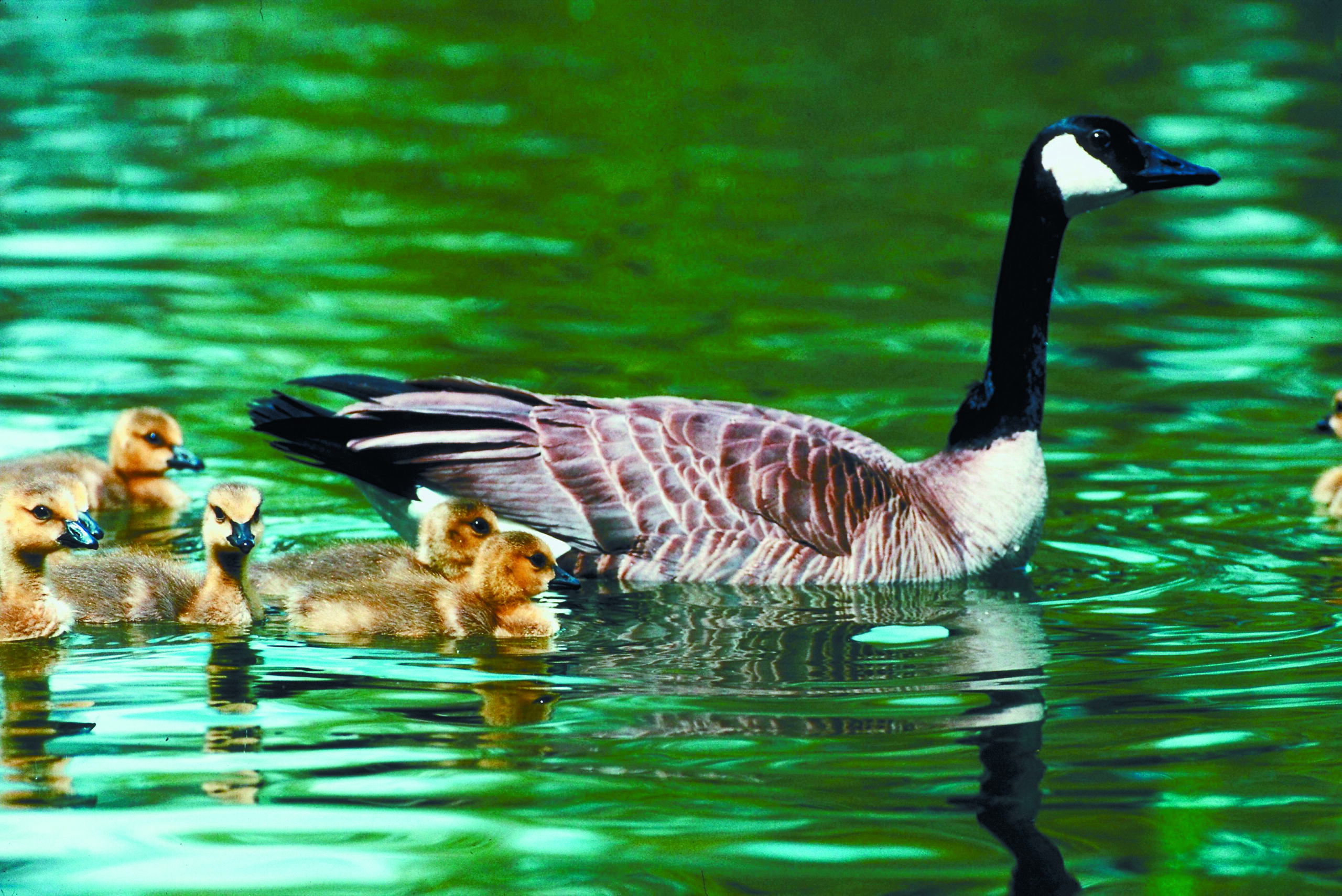Canada Geese have become a nuisance in many suburban parks or nature areas that feature ponds and lakes. In some areas, the geese have completely taken over and huge deposits of fecal matter make them unusable for family outings, casual strollers, or anyone seeking a friendly moment or two in tune with nature.
Communities have resorted to all sorts of schemes to get rid of the geese, which prompted David Feld, director of GeesePeace (www.geesepeace.org), to seek more humane and rational solutions to the problem. Initially, he was motivated by a problem with geese in his own community.
In an interview with the online magazine Grist, Feld, explains thast migrating Canada Geese were once near extinction and some missteps by wildlife management agencies have led to the current problem. In the past, millions of Canada Geese migrated North in the spring to nest and then headed South in the late fall. Sport and commercial hunters became extremely adept at hunting the migrating flocks. Geese were lured to fields by corn, captured, their feathers clipped so they could not fly, and then set out to swim on ponds. Other geese would see the birds swimming below and, assuming it was a safe haven, join them. Alas, hunters were waiting nearby to collect down feathers and meat from the birds.
The geese grew increasingly scarce. Then in 1965 an intact flock was discovered in Missouri. Wildlife agents took their eggs, incubating them in many parts of the country thus encouraging them to nest in a wide array of areas. Because migration is a learned behavior, if geese are born in New Jersey or Connecticut, they have no reason to fly off to Canada. They return to the place of their birth to nest and raise their young. The problems that developed as a result of this plan to restore geese to healthy numbers were certainly unforeseen at the time.
The answer, however, is not to blame the geese. Feld along with other community leaders have come up with strategies to deal with the problem. There are several steps to a long-term solution. Volunteers search for nests with eggs and then coat the eggs in corn oil to prevent development. Border collies are kept near ponds and lakes to discourage geese from landing. While certain areas are set aside for returning geese, communities also have exclusion areas patrolled by the dogs that flush the geese out and away from the water. Geese who do have hatchlings are not harassed or disturbed.
Communities that have implemented these strategies report success within a fairly short time, even within a year. Wildlife management is, without doubt, a complex field, but GeesePeace believes the animals should not pay for human errors. So far they have found solutions that are working for both the feathered and the unfeathered.



